Each December, I like to reflect on the best things I’ve read over the course of the year and share some of those. With so much focus on finishing my dissertation this year, I didn’t read nearly as many books as normal. But, I still managed several, and they were a nice break from academic papers. These are things that have stimulated my curiosity, creativity, and general interest this year.
You can read last year’s favorite books here.
The Code Breaker
by Walter Isaacson
The Code Breaker details the life and work of Nobel laureate Jennifer Dounda, a scientist who is largely credited with pioneering the genetics research that led to the discovery of CRISPR-based gene editing. I had doubts that Isaacson could relay the information necessary to tell this story engagingly with such a complex topic, but I’m glad I was wrong. While there was the occasional deep dive into the science of genetics, The Code Breaker frames this story through the lens of the people that have made gene editing possible. Although Dounda is the star of the story and the link through which everyone connects, the book weaves its way through a large cast of collaborators and rivals whose work combined to discover things that will forever change the world. I particularly appreciated Isaacson’s poetic bookending of the story with the relationship between Dounda and James Watson, who contributed to the initial discovery of DNA’s double-helix structure. Beyond learning about how gene-editing technology works, I gained a deeper understanding of the process of scientific discovery, the interplay between university research labs, the nuanced relationships between different researchers in shared specialties, and the politics of the journal publication process.
It’s impossible to consider gene editing without quickly arriving at the potential ethical questions that arise from it. Isaacson devoted an entire section of his book to these moral dilemmas and did a masterful job stimulating my moral imagination by presenting real and hypothetical scenarios. While I don’t have an answer to many of the ethical questions that society will face as gene editing technology advances, I feel much better equipped to have those discussions. I also hope that most in the scientific community and those in political office would consider reading this book to be better prepared to handle ethical issues in this arena.
While my reading stimulated many concerns about the future, I also found myself inspired by just how young many of the most significant contributors to gene editing science were when they published their crucial research and left their mark on the world. Many were doctoral students or new post-docs in their twenties and thirties. They came from incredibly diverse backgrounds all over the world. There is an old tired narrative that scientific breakthroughs come from white-bearded eccentric old men in dusty basement labs. The story of gene editing shows that science is not only for everyone; it’s better with many diverse thinkers collaborating and competing.
The invention of CRISPR and the plague of COVID will hasten our transition to the third great revolution of modern times. These revolutions arose from the discovery, beginning just over a century ago, of the three fundamental kernels of our existence: the atom, the bit, and the gene.
Isaacson, Walter. The Code Breaker: Jennifer Doudna, Gene Editing, and the Future of the Human Race (p. XVII). Simon & Schuster. Kindle Edition.
Many point to the discovery of CRISPR gene-editing technology as one of the most important scientific discoveries in modern history, and after reading The Code Breaker, I would certainly agree. Isaacson believes that soon, the next generation of young people will be drawn to bio-engineering as a potential career path in a way that they are currently pulled towards technology jobs. I don’t think that pull will be quite as strong as he does, but I do believe it will strongly increase. If you want to gain a better understanding of gene editing technology or just how science comes into the mainstream, I can’t imagine you’ll find a better book than this one.
Rationality
by Steven Pinker
Why do people frequently behave in irrational ways? That’s the big question Steven Pinker seeks to answer in his latest book, Rationality. As you might have guessed, the answer is complex and multi-faceted. Fortunately, making sense of complexity through data and real-world scenarios is what Pinker does best. Several of his prior works have appeared on my annual list of favorite books, including The Better Angels of Our Nature and Enlightenment Now. Without a doubt, Rationality belongs on the same tier as those books.
In Rationality, Pinker lays out the different reasons people often make irrational judgments or act in ways not in the best interest of themselves or society. These include situations where individuals ignore base rates, misunderstand probability or randomness, fail to employ critical thinking or Bayesian reasoning, are overwhelmed with false alarms, or confuse correlation with causation. You may understand all those concepts at a surface level, but Pinker goes far beyond the surface. Each section provides an overview of the logical fallacy or another basis for irrationality, complete with several meaningful examples. He dives into data frequently where it’s helpful, without overwhelming the reader with numbers or charts.
My greatest surprise in making sense of moral progress is how many times in history the first domino was a reasoned argument. A philosopher wrote a brief which laid out arguments on why some practice was indefensible, or irrational, or inconsistent with values that everyone claimed to hold. The pamphlet or manifesto went viral, was translated into other languages, was debated in pubs and salons and coffeehouses, and then influenced leaders, legislators, and popular opinion. Eventually the conclusion was absorbed into the conventional wisdom and common decency of a society, erasing the tracks of the arguments that brought it there.
Pinker, Steven. Rationality (p. 329). Penguin Publishing Group. Kindle Edition.
The wonderful thing about Rationality is that it doesn’t just apply to broad societal behavior in the abstract. With a bit of reflection, you can identify facets of Pinker’s elements of irrationality in your everyday personal and professional life. I wound up taking several pages of notes related to how infosec practitioners act irrationally, both in common debates that arise in the community of practice and specific ways relevant to my research on analyst cognition. The power in that recognition is that it helps prepare you for discussions on these topics when they arise. That doesn’t mean you’ll change anyone’s mind, but at least you might be able to plant some seeds.
Like many Pinker books, where he chooses to dive in deeper is a bit random and unexpected. There were a few sections where my eyes glazed over a bit, forcing me to back up and cover the ground I subconsciously tuned out. However, these weren’t too frequent, and most topics were covered with the right level of detail and nuance. Rationality won’t give you a single tidy answer to why people often behave irrationally. Still, it will provide you with a list of reasons that can at least partially explain many of the irrationalities you’ll encounter. He stops short of offering much advice for moving people past their irrational behavior, but that’s a different question; to change behavior, you first have to understand it. As always, Pinker brings a thoughtful and detailed lens. If nothing else, the last chapter’s discussion on why rationality matters within a historical context was something I found incredibly motivating. I finished the book at night and found my mind on fire with conviction and curiosity for the next several hours, unable to go to sleep. While I paid for it the next day, that’s a feeling I appreciate from any book.
Project Hail Mary
by Andy Weir
I only read a few fiction books each year, and I’m glad I chose Project Hail Mary as one of those this year. You may know Andy Weir from his book The Martian and the movie of the same name starring Matt Damon (with whom you should never go to space). Both the book and movie were favorites of mine, enough so that I’m pretty much on board to read anything Weir writes. Although I wasn’t very excited about his follow-up book Artemis, his newest book immediately pulled me in, and I couldn’t put it down. I finished it in just a weekend.
It’s hard for me to tell you why this book is so good without giving away crucial plot elements because much of the book’s intrigue is built around surprise. I can tell you that Weir provides a plot that focuses on the internal dialog of the protagonist as he experiences continual setbacks and shifts from problem to problem in pursuit of a larger goal. He works through life-threatening issues involving engineering, chemistry, and biology, reminiscent of Mark Watney’s survival experience in The Martian. Weir’s storytelling paints rich, descriptive pictures while leaving enough mystery for your imagination to run wild. As a nice bonus, you’ll learn some neat physics and space facts along the way. For example, do you know why microwave ovens have a mesh covering the viewing window on the door? You’ll find out.
If you liked The Martian, you’ll love Project Hail Mary. If you haven’t read anything by Weir, this book is an equally great place to start.
Noise
by Daniel Kahneman
When I found out that Daniel Kahneman was writing a new book, I pre-ordered it immediately and anxiously awaited for the day that it showed up in my Kindle app. His Thinking Fast and Slow is perhaps the book I recommend most for people interested in the intersection of cognitive psychology and any professional analytic work. Noise is written in a similar approachable style, simplifying mountains of research into something approachable and relatable. For this book, Kahneman focuses on the concept of noise, which is variability in judgments that should be identical.
Wherever there is judgment, there is noise—and more of it than you think.
Kahneman, Daniel; Sibony, Olivier; Sunstein, Cass R.. Noise . Little, Brown and Company. Kindle Edition.
Kahneman begins by describing noise and distinguishing it from bias, which he wrote quite a bit about in his last book. Next, he unpacks the concept into different types of noise and their sources. This book is not merely about understanding; it also has a practical element, including strategies shown to identify and reduce noise. I particularly enjoyed the detailed overview of a noise audit process that organizations can leverage to identify noisy business and analysis processes.
Many fields suffer from noisy judgments, which makes this book useful to a wide array of people. I immediately identified several noisy processes common to the infosec profession and strategies that might be useful for reducing variability among decision-makers. Of course, this also drove me toward some introspection about places where my own decisions might be noisy in specific situations and how I might limit the adverse effects of that.
While Thinking Fast and Slow moved quickly between topics and seemed like a collection of related but standalone ideas, Noise is more linear. Each chapter feels like a chapter in a larger story and builds upon prior information while giving you things you need for concepts you’ll read about in the following sections. That means that you should pay attention throughout the first few chapters. Overall, Noise is an approachable but detailed breakdown of how variability creeps into decision-making, how to identify processes that are prone to that variability, and how to reduce it. I recommend this book to anyone who has an interest in analytic decision-making. As it happens, I read this around the same time I read Rationality (also appearing on this list) and found them to be a great pairing.
Blueprint for Revolution
by Sroja Popovic
I’m interested in many forms of human behavior, but the nature of activism and protest has drawn my attention lately. While reading about the Balkan conflicts of the nineties, I ran across an article about Sroja Popovic, which led me to his book. Popovic was involved in founding a Serbian youth movement that had a hand in building the momentum that led to the countries citizens disposing of Slobodan Milosevic. Since then, he has devoted much of his life to helping other nonviolent movements organize and further their causes. Blueprint for Revolution describes his experiences.
Blueprint for Revolution outlines the essential elements of organizing nonviolent movements for change. I was taken by just how real Popovic was, dealing not only with idealism or pie in the sky dreams but with tangible concepts that draw followers and move ideas into action. With plenty of examples, he shows the importance of uniting behind collective symbols, invoking the power of humor against your oppressors, and techniques for strategically making oppression backfire. Through all of this, Popovic remains devoted to a nonviolent approach, even including some of his philosophy on the value of leveraging nonviolence towards meaningful goals. He often cites famous nonviolent movement leaders you would have heard of, like Gandhi and Dr. Martin Luther King Jr. He also goes deeper and mentions many other names I had not heard of but was interested in learning about.
You may accuse people who just care about taking it one day at a time and tending their own garden of being selfish or blind or even immoral. The worst activists I’ve ever seen did just that. They got nowhere, because it’s unrealistic to expect people to care about more than what they already care about, and any attempt to make them do so is bound to fail. Benjamin Franklin is said to have remarked, “All mankind is divided into three classes: those that are unmovable, those that are movable, and those that move.” I imagine you, the reader, are one who moves. Your task, then, is to find those who are movable and get them to join you.
Popovic, Srdja; Miller, Matthew. Blueprint for Revolution (pp. 45-46). Random House Publishing Group. Kindle Edition.
This book is an accessible handbook for protestors, activists, and community organizers. While I think there are many valuable ideas to take from this book for people identifying with those roles, its value goes much further beyond that. Without using psychology terms, Blueprint for Revolution hits on powerful examples of how benevolent and evil leaders persuade followers to their cause and influence behavior. I think those focused on social good across any number of communities (even within communities of professional practice) can learn techniques from this book that can lead to effective change for social good. But also, the lessons here imbue the reader with the ability to recognize the use of these techniques by groups seeking to subvert the common good for their own causes. Therefore, the blueprint for revolution becomes valuable for offense and defense alike. This book unexpectedly changed the way I viewed part of the world.
A Civic Technologist’s Practice Guide
by Cyd Harrell
Civic Technology, as Harrell defines it, is “a loosely integrated movement that brings the strengths of the private-sector tech world (its people, methods, or actual technology) to public entities with the aim of making government more responsive, efficient, modern, and more just.” That encompasses things like the design and development of software that facilitates interaction between the government and its citizens, but many other things as well. You interact with civic tech when you go online to apply for federal government aid, pay your property taxes, or register to vote. While you may think of these things as just software, planning and developing civic tech brings about a unique set of challenges because of the numerous and diverse stakeholders, public perception of taxpayer funding, and constantly shifting public policies. In A Civic Technologist’s Practice Guide, the author provides a breadth of information surrounding the complexities of the domain. This book is a quick read at 168 pages, providing a high-altitude view of civic tech’s different forms and functions. I was impressed by how Harrell captured so much of the nuance and challenges with civic tech development in such short text. So many times, people want to throw technology at a problem without understanding the true cost and complexity of potential tech-based solutions. Even worse, that technology can amplify human bias into a form of algorithm bias that unconsciously discriminates against groups of people or leaves people out. By carving civic tech out as its own facet of the tech realm, Harrell provides a guide that can help avoid such pitfalls.
The private-sector tech industry focuses on scale a great deal, but public institutions represent a different kind of scale. They affect people’s lives not just at enormous breadth, but over long stretches of time. Most of them operate in full awareness of this, seeing their role as one of stewardship of public goods (and public funds) rather than rapid innovation.
Harrell, Cyd. A Civic Technologist’s Practice Guide (p. 16). Five Seven Five Books. Kindle Edition.
While this book won’t tell you how to build software or overcome specific design challenges, it is ideal for anyone who wants to work professionally or as a volunteer in the civic technology space. This book would also be valuable for those in the political realm concerned with the potential for technology to help solve social problems or facilitate better government/citizen interaction. I continue to find value in referencing Harrell’s guide from time to time through my civic tech adjacent work at the Rural Technology Fund and consider its wisdom through my other volunteer efforts and interactions with local policymakers.
Farm (And Other F Words)
by Sarah K. Mock
Even though I didn’t grow up on a farm, they played a role in multiple facets of my life in western Kentucky. Many of my friends and family worked on farms, either as seasonal help setting tobacco or full-time supporting local corn and soybean operations. I even found work that was farm adjacent. One year when the weather resulted in lost fruit harvests for many local growers and individual gardens, my Dad and I rode up into Missouri to buy tomatoes, watermelons, and cantaloupes by the trailer load. We brought them back, and I sold them out of my front yard all summer. This was my first job, and it helped buy my first car after two summers hustling my wares. As I got older and more removed from farm life, I found that national sentiment toward farms was much different than my own experience, and I struggled to understand why. Farm (And Other F Words) did an excellent job helping me explain the disparity between that perception and reality.
In this book, Mock sets the stage by describing the idyllic family farm that most think of when they visualize it. Then, she goes on a quest to find those farms. As she journeys from family-owned farms to organic farms to sustainable farms and everything in-between, she reveals many truths about farming in America… and some are not so pleasant. The portraits of these farms highlight how farms make money, the various federal and state systems that prop them up, and the nature of farm labor. One of her primary arguments is that farming should not be seen as an inherently moral or philanthropic venture because doing so causes significant harm. This often manifests through the government-allowed (and sometimes even endorsed) exploitation of labor, which Mock shows in various settings. Among the interesting things that stood out to me in support of this thesis was how the government distinguishes one farm from another (what the gov thinks is a small farm is not what you think is a small farm), and how land accumulation drives different elements of the industry.
We also must contend with the fact that those who have suffered, and continue to suffer, the most at the hands of our agricultural system are not farm owners, but the generations of workers and other exploited and dispossessed people whose formidable contributions to feeding America are often cropped out of our agricultural picture.
Mock, Sarah K . Farm (and Other F Words): The Rise and Fall of the Small Family Farm (p. 212). New Degree Press. Kindle Edition.
Most folks who haven’t spent time working in or around farms tend to think of farmers as just anyone who works on the farm. If nothing else, my biggest takeaway from this book was the crucial distinction between the farm owner and the farmworker in that narrative. If you grew up around farms like me, then Mock’s book will help make sense of the various external forces that drive the farm industry from outside the small communities in which they exist. If you don’t know a lot about farms, the book will help you better understand the realities of successful (and unsuccessful) farms.
Next Year
I didn’t read as much in 2021 as I usually do, primarily because a large chunk of my time focused on finishing and defending my doctoral dissertation (which I did successfully in September). My to-read pile grew a lot during the year, but as soon as I finished my defense I started to work through a lot of books as my mind yearned for stimulation outside the realm of my research. I’m looking forward to carrying that momentum into 2022.
Did you have a favorite book you read this year or a recommendation you think I’d like? If so, I’d love to hear about it in the comments or on Twitter.
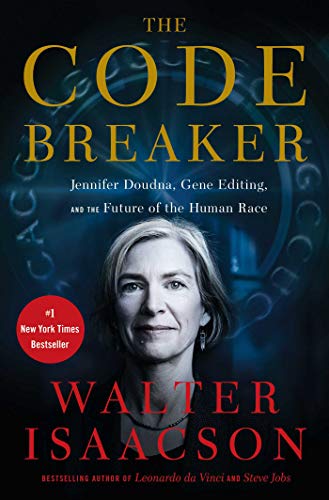

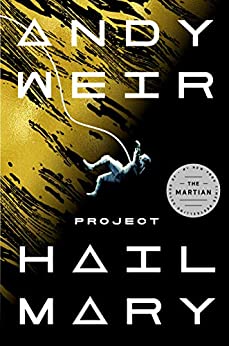
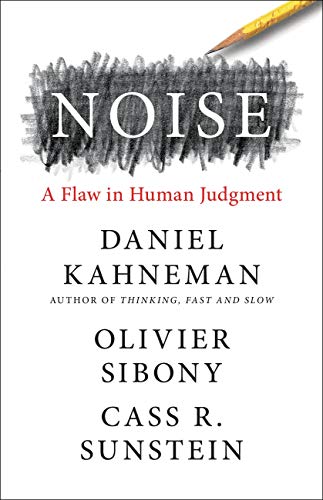
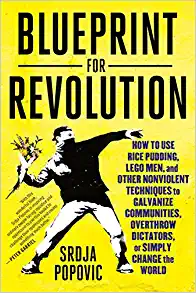
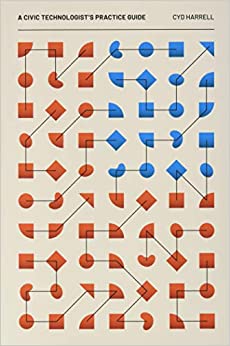

The Woman who Smashed Codes was probably the most enjoyable book I read this year. Her story to persevere was engaging, many times where you ponder if there was one card holding the house up during WW2, was she it. The other I enjoyed that is similar to some of these is Matthew Syed’s Black Box Thinking. I use examples portrayed in that book often at work.